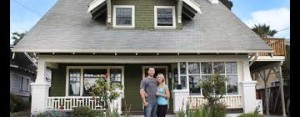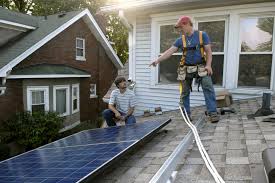The San Diego MLS Green Features Initiative is taking shape. The growing consumer interest in sustainability is attracting attention. In California, energy efficiency has been cost-effective since 1978. Homeowners who have invested in energy efficient upgrades need to see the value of their investments reflected in appraisals and selling prices. Buyers are shopping smarter when it comes to energy.
 In California, there’s a huge difference between home built before 1978 and those built since. Homes built today are more than 400% more energy efficient than older homes. These improvements lower utilities costs and make homes safer, healthier, and more comfortable,
In California, there’s a huge difference between home built before 1978 and those built since. Homes built today are more than 400% more energy efficient than older homes. These improvements lower utilities costs and make homes safer, healthier, and more comfortable,
Behind the scenes, progressive San Diego Realtors and allied professionals continue to gain momentum in their effort to include green features in MLS listings. Interest in this effort stems from a strong sentiment in the industry that “green” provides value to clients trying to respond to rising energy prices and upgrade an aging, inefficient, often uncomfortable housing stock. The “green” designation is growing more popular among Realtors,
Federal, state, and local governments have taken notice of the cultural shift toward sustainability and have spread around incentives to improve buildings’ efficiency and diminish the country’s dependence on non-renewable energy sources.
Areas where green MLS statistics have been kept show the positive trends that green home sales are making in their area. For instance, in Atlanta during 2009, certified green homes sold 3.6% closer to list price and were on the market 31 days less than conventional new construction (108 vs. 139 days).
A 2012 UCLA study finds a 9% contributory value for green-labeled homes. The 2011 North Carolina Energy Efficiency Alliance’s ENERGY STAR Market Impact finds that ENERGY STAR® new homes sold for a $5,500 premium, 90 days sooner than other homes.
One way to ensure that the industry is prepared for the growing attention and demand for more efficient, comfortable homes is by making it simpler to find, promote, and evaluate green properties. As the San Diego MLS Green Features initiative gains steam around the country, building professionals in San Diego have established cross-functional teams to plan and execute green MLS here.
What can you do?
- Sign the letter supporting adding green features to San Diego MLS listings. http://energycenter.org/mls
- Contact your Realtor association to see where they stand with implementing the San Diego Green Features Initiative.
- Look for additional articles and blog posts from us as we continue to help the industry understand the ins and outs of energy efficiency, ROI for improvements, and the array of rebates and financing packages to support investments.








Recent Comments